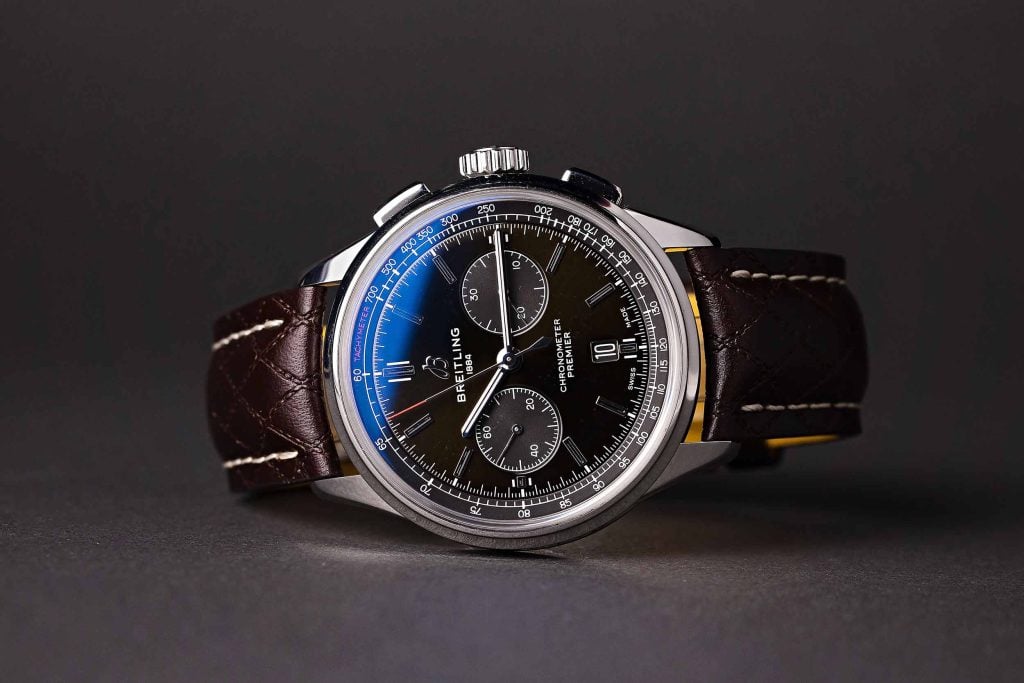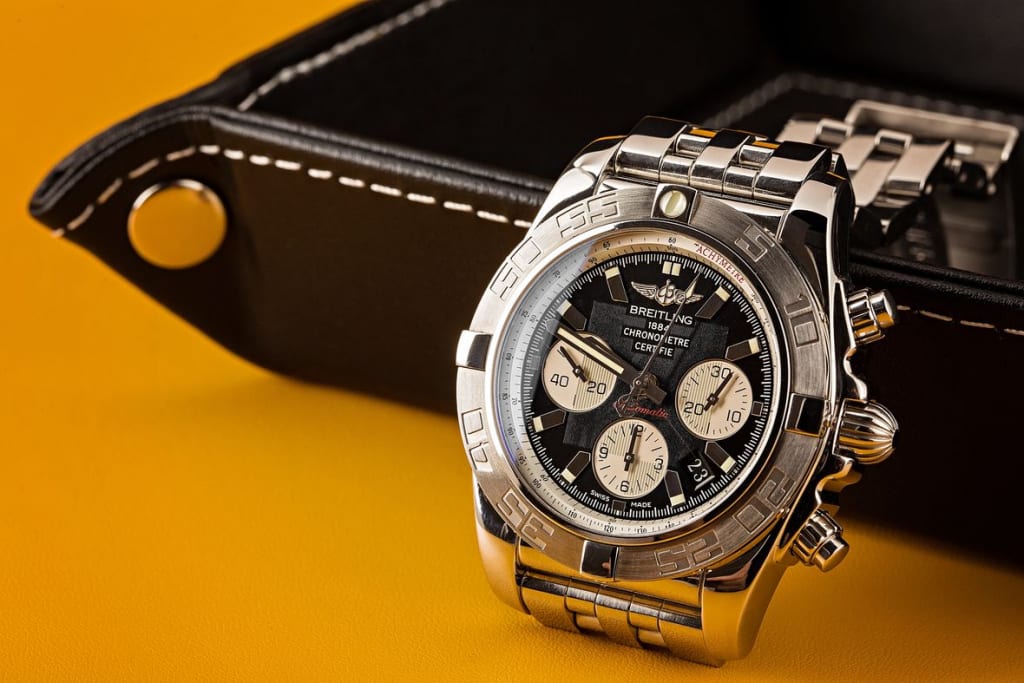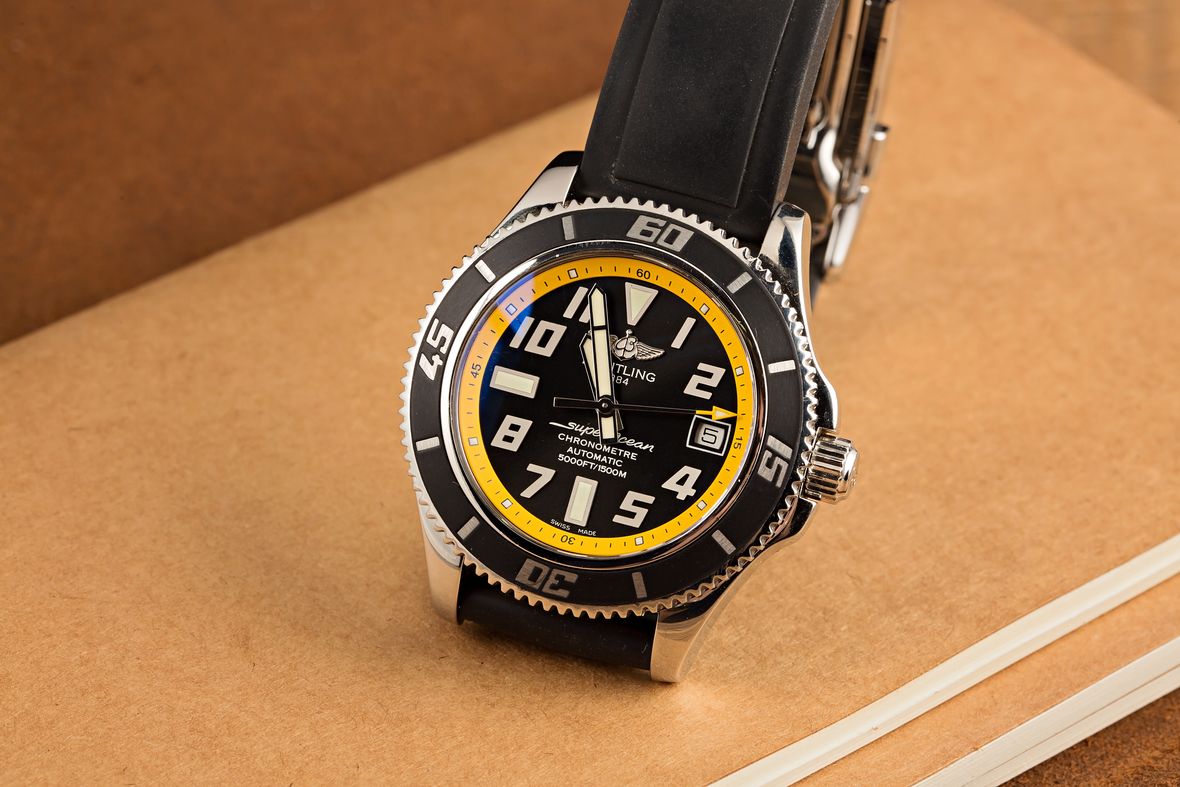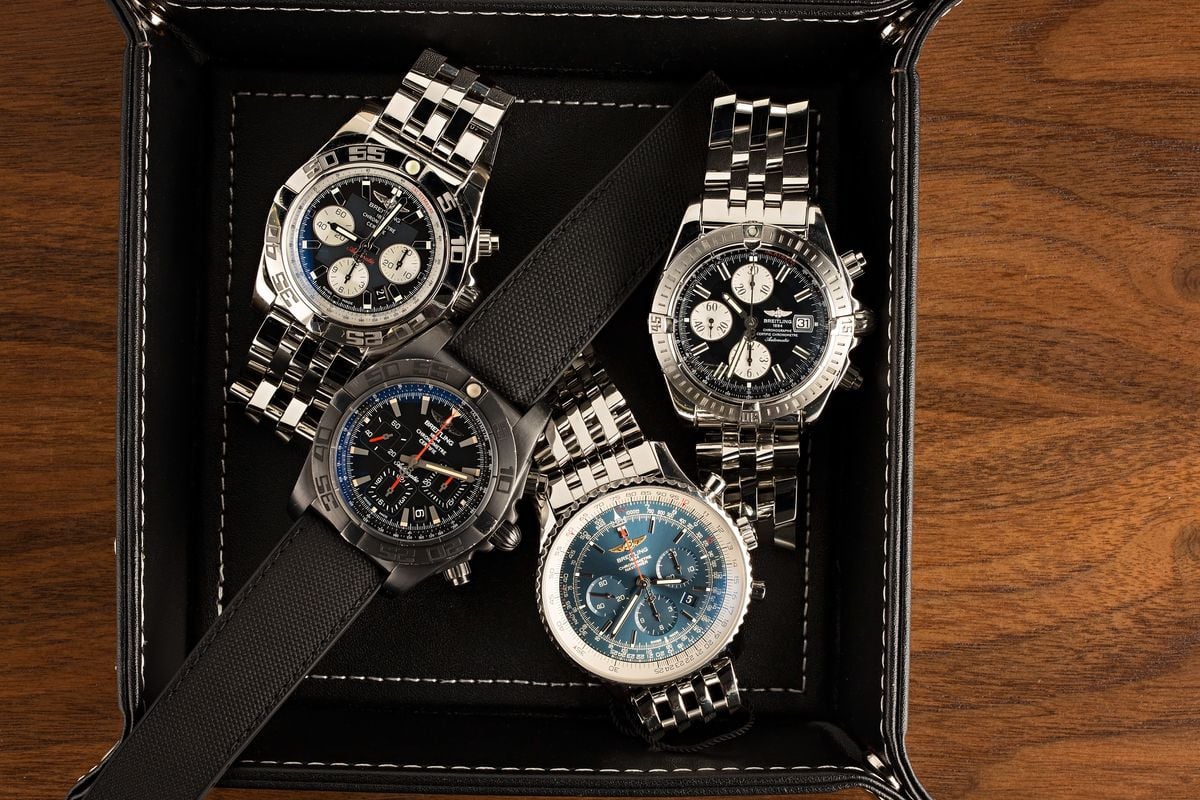Breitling Serial Number Check: How to Decode Your Watch's History
Unraveling the mystery behind your Breitling watch starts with understanding its serial number. This unique identifier holds the key to your watch's origin, specifications, and authenticity. For collectors and enthusiasts alike, mastering the art of decoding Breitling serial numbers not only enhances your appreciation for these precision instruments but also safeguards your investment. Let's dive into the world of Breitling serial numbers and unlock the secrets they hold.
What Are Breitling Serial Numbers?

Breitling serial numbers are unique identifiers assigned to each timepiece, serving as a fingerprint for your watch. These alphanumeric codes have been an integral part of Breitling's production process since the early 20th century, evolving alongside the brand's illustrious history. Understanding these numbers not only reveals details about your specific watch but also provides a glimpse into Breitling's history, showcasing how the company's approach to identification has changed over time.
Initially, Breitling used simple numeric sequences, but as production expanded and diversified, so did their serial number system. Today's serial numbers are sophisticated codes that reveal a wealth of information about your watch.
When you decipher a Breitling serial number, you're uncovering a treasure trove of details. From the year of manufacture to the specific watch collection, and even the materials used in its construction - all this information is encoded within those digits. For collectors and enthusiasts, this knowledge is invaluable, offering insights into the watch's provenance and helping to authenticate genuine Breitling timepieces.
Serial Number Structure: A Breakdown

Breitling serial numbers typically consist of 6 to 8 digits, depending on the model and age of the watch. These unique numbers are carefully engraved on the case back or discreetly positioned between the lugs (the area where the strap attaches to the case). In some instances, you may need to remove the strap or bracelet to locate the serial number.
Once you find your Breitling's serial number, you’ll notice it consists solely of numbers, something like this: 2345678. The serial number is an individual identifier for each specific watch, ensuring that no two watches are exactly alike. This sequence does not reveal information about the watch's collection, material, or other design features—that’s what the model reference number does.
The serial number itself serves as your watch’s unique production code, helping to authenticate its origin and track its production history. Unlike the model reference number, which can indicate the collection (e.g., Navitimer or Chronomat) and materials used, the serial number is solely dedicated to identifying your specific timepiece.
While the serial number won't tell you the material type or model collection directly, it plays a crucial role in confirming the authenticity and individuality of your Breitling watch.
| Serial Number |
Production Year |
Function |
|---|---|---|
| 3815000 | 1920 | Non-Chronograph |
| 3880000 | 1921 | Non-Chronograph |
| 3945000 | 1922 | Non-Chronograph |
| 4047100 | 1923 | Non-Chronograph |
| 4148000 | 1924 | Non-Chronograph |
| 4250000 | 1925 | Non-Chronograph |
| 4500000 | 1926 | Non-Chronograph |
| 4625000 | 1927 | Non-Chronograph |
| 4750000 | 1928 | Non-Chronograph |
| 4886000 | 1929 | Non-Chronograph |
| 4959000 | 1930 | Non-Chronograph |
| 5031000 | 1931 | Non-Chronograph |
| 5104000 | 1932 | Non-Chronograph |
| 5177000 | 1933 | Non-Chronograph |
| 5250000 | 1934 | Non-Chronograph |
| 5333000 | 1935 | Non-Chronograph |
| 5416000 | 1936 | Non-Chronograph |
| 5500000 | 1937 | Non-Chronograph |
| 5750000 | 1938 | Non-Chronograph |
| 5850000 | 1939 | Non-Chronograph |
| 5950000 | 1940 | Non-Chronograph |
| 6140000 | 1941 | Non-Chronograph |
| 6331000 | 1942 | Non-Chronograph |
| 6522000 | 1943 | Non-Chronograph |
| 6713000 | 1944 | Non-Chronograph |
| 6904000 | 1945 | Non-Chronograph |
| 7106000 | 1946 | Non-Chronograph |
| 7309000 | 1947 | Non-Chronograph |
| 7511000 | 1948 | Non-Chronograph |
| 7713000 | 1949 | Non-Chronograph |
| 7915000 | 1950 | Non-Chronograph |
| 8225000 | 1951 | Non-Chronograph |
| 8535000 | 1952 | Non-Chronograph |
| 8845000 | 1953 | Non-Chronograph |
| 9183000 | 1954 | Non-Chronograph |
| 9521000 | 1955 | Non-Chronograph |
| 9859000 | 1956 | Non-Chronograph |
| 10201000 | 1957 | Non-Chronograph |
| 10543000 | 1958 | Non-Chronograph |
| 10885000 | 1959 | Non-Chronograph |
| 11211000 | 1960 | Non-Chronograph |
| 11538000 | 1961 | Non-Chronograph |
| 11864000 | 1962 | Non-Chronograph |
| 12368000 | 1963 | Non-Chronograph |
| 12621000 | 1965 | Non-Chronograph |
| 12873000 | 1966 | Non-Chronograph |
| 13839000 | 1967 | Non-Chronograph |
| 14834000 | 1968 | Non-Chronograph |
| 15000000 | 1969 | Non-Chronograph |
| 1002735-1060398 | 1965 | Chronograph |
| 1060399-1122809 | 1966 | Chronograph |
| 1122810-1204581 | 1967 | Chronograph |
| 1204582-1262904 | 1968 | Chronograph |
| 1262905-1337825 | 1969 | Chronograph |
| 1337826-1356899 | 1970 | Chronograph |
| 1356900-1382203 | 1971 | Chronograph |
| 1382204-1406566 | 1972 | Chronograph |
| 1406567-1426969 | 1973 | Chronograph |
| 1426970-1433372 | 1974 | Chronograph |
| 1433373-1439417 | 1975 | Chronograph |
| 1439418-1442922 | 1976 | Chronograph |
| 1442923-1448464 | 1977 | Chronograph |
| 1448465-1448473 | 1978 | Chronograph |
| 563659-568959 | 1944 | Chronograph |
| 568971-636507 | 1945 | Chronograph |
| 636508-692266 | 1946 | Chronograph |
| 703562-717737 | 1947 | Chronograph |
| 717784-728688 | 1948 | Chronograph |
| 728724-740210 | 1949 | Chronograph |
| 740405-769843 | 1950 | Chronograph |
| 769844-808456 | 1951 | Chronograph |
| 808457-817915 | 1952 | Chronograph |
| 817916-832126 | 1953 | Chronograph |
| 832127-844123 | 1954 | Chronograph |
| 844124-868778 | 1955 | Chronograph |
| 868779-889562 | 1956 | Chronograph |
| 889563-898029 | 1957 | Chronograph |
| 898830-910504 | 1958 | Chronograph |
| 910505-922163 | 1959 | Chronograph |
| 922164-933063 | 1960 | Chronograph |
| 933064-947803 | 1961 | Chronograph |
| 947804-963553 | 1962 | Chronograph |
| 963554-975997 | 1963 | Chronograph |
| 975998-1002734 | 1964 | Chronograph |
How to Use Breitling Serial Numbers to Identify Watch Details

Breitling serial numbers are crucial for verifying the authenticity and tracking the history of your timepiece. Each number is a unique identifier that connects your watch to its production records. Let’s explore how to use these serial numbers to unlock key details about your Breitling watch.
Verifying the Watch’s Authenticity
The primary purpose of a Breitling serial number is to serve as a unique identifier for each individual watch, ensuring that no two watches are alike. By referencing the serial number with Breitling or an authorized dealer, you can confirm the watch’s authenticity and gain insight into its production history. Serial numbers are typically engraved on the case back or discreetly placed between the lugs, where the strap connects to the case. These numbers play a vital role in confirming the legitimacy of your Breitling timepiece.
Unlike model reference numbers, which indicate the collection and specific details like case material or movement type, serial numbers are purely for identification and tracking purposes. When purchasing a pre-owned or vintage Breitling, checking the serial number with the manufacturer’s records or through authorized verification services ensures that you are buying an authentic piece, free from counterfeit concerns. This process is especially important for collectors and enthusiasts who want to ensure the authenticity and value of their investment.
Tracking the Year of Manufacture
Although Breitling serial numbers do not directly encode the year of manufacture, they are still a key piece in determining the watch's production date. Breitling maintains detailed records linking specific serial number ranges to corresponding years of production. For example, a watch produced in the early 2000s may have a serial number starting around 1 million, while a watch from the 2010s may have a serial number beginning with 2 million. This allows you to estimate the year your watch was made, even if it is a pre-owned or vintage piece.
For older Breitling models, especially vintage watches, the system may differ due to changes in production practices and numbering formats over the years. Collectors and enthusiasts often rely on official Breitling serial number guides, databases, or authorized dealers to accurately pinpoint the production year. Knowing the production year can be especially important when buying a vintage watch, as it contributes to both the historical significance and market value of the timepiece.
Ensuring Originality and Integrity
Serial numbers are also crucial when it comes to verifying the originality of a Breitling watch. They can help confirm whether the components of the watch - such as the case, movement, or dial - are original or have been replaced. For instance, if a watch has undergone repairs or alterations and parts have been swapped out, the serial number may no longer match Breitling’s official records. This could raise concerns about the authenticity and integrity of the watch.
Collectors and buyers of pre-owned watches should always verify that the serial number matches the original records for the watch. Doing so can prevent purchasing a watch with counterfeit or non-original parts, which could drastically reduce its value. This step is essential for maintaining the integrity of the timepiece, especially for high-value or limited-edition models where every original component adds to the watch’s overall worth.
Serial Numbers and Value

For collectors, the serial number plays an important role in determining a Breitling watch’s value. Limited-edition models or rare versions of Breitling watches often have distinct serial number ranges, which can make them more desirable and valuable. For instance, a watch with a lower serial number in a limited production run may be considered more collectible, as it indicates an early piece from the production line. Serial numbers help verify these details, adding to the watch’s prestige and market value.
Understanding the correct serial number for a specific model or year also helps buyers and sellers in the secondary market. A watch with an easily verifiable serial number can fetch a higher price, as it reassures buyers of its authenticity and originality. Whether you are selling a vintage Breitling or purchasing a pre-owned model, the serial number is an essential tool for determining the true market value of the watch and ensuring a fair transaction.
Common Misconceptions About Breitling Serial Numbers

Navigating the world of Breitling serial numbers can be complex, and several misconceptions often lead collectors astray. One common myth is that all Breitling models follow the same serial number structure. In reality, the format can vary significantly between different collections and production eras.
Another frequent error is confusing serial numbers with model reference numbers. While both are crucial identifiers, they serve different purposes. Serial numbers are unique to each individual watch, whereas model reference numbers indicate the specific design and features of a particular Breitling line.
Understanding these distinctions is crucial for accurate identification and valuation. It's not uncommon for newcomers to misinterpret these numbers, potentially leading to incorrect assumptions about a watch's age, model, or authenticity. Always cross-reference your findings with reliable Breitling resources to ensure accurate interpretation.
Breitling Serial Numbers vs. Model Reference Numbers

While serial numbers and model reference numbers both play crucial roles in identifying Breitling watches, they serve distinct purposes. Serial numbers, as we've explored, are unique identifiers for individual timepieces, revealing details about production date, materials, and authenticity.
Model reference numbers, on the other hand, are specific to each Breitling design. They indicate the particular model within a collection, including information about complications, case size, and dial variations. For instance, a Navitimer might have a model reference like "A13324," which tells experts exactly which version of the Navitimer it is.
| Digit | Meaning | Example references |
|---|---|---|
| 1 | Case material | A – Steel bezel/case |
| B – Steel bezel/case/gold riders | ||
| C – Rose gold bezel/steel case | ||
| D – Yellow gold bezel/steel case | ||
| E – Titanium bezel/case | ||
| F – 18kt bezel/titanium case | ||
| G – White gold bezel/steel case | ||
| H – 18kt rose gold bezel/case | ||
| J – 18kt white gold bezel/case | ||
| K – 18kt yellow gold bezel/case | ||
| L – Platinum bezel/steel case | ||
| M – Blacksteel bezel/case | ||
| N – Carbon case | ||
| P – Platinum bezel/steel case | ||
| R – Red gold bezel/case | ||
| T – Palladium bezel/case | ||
| V – Black titanium bezel/case | ||
| X - Breitlight® case | ||
| Y – Ceramic bezel/steel case | ||
| 2, 3 | Movement | 10–49 – Mechanical movements |
| 50+ - Quartz movements | ||
| 4 | COSC Certified | 0 – Non-COSC certified |
| 3 – COSC Certified | ||
| 5, 6 | Model | Two numbers of no pattern are used to represent the model type. |
| 7, 8 | Finish | 10 – Satin/brushed/titanium finish |
| 11 – No special finish | ||
| 12 – Polished finish | ||
| 13 – Satin and polished finish | ||
| 53 – Diamond bezel | ||
| 9 | Dial color | A – Mother of pearl, white, beige, ivory, arctica |
| B – Black, anthracite, diamond black, royal ebony | ||
| C – Blue, moroccan blue, meteor, neptune blue, peacock blue | ||
| E – Rhodium | ||
| F – Slate, slate-grey | ||
| G – Silver, silver storm | ||
| H – Champagne, amber, desert dune | ||
| I – Yellow | ||
| J – Smoke grey | ||
| K – Red, burgundy, sunset, rose | ||
| L – Green, turquoise, laurel green, spruce | ||
| M – Graphite, titanium | ||
| O – Coral | ||
| Q – Bronze, havana, grey violet, burnt oak | ||
| 10, 11, 12 | Dial Pattern | Three digits of no pattern are used to represent the model type. |
Here is an example of how to break down a Breitling watch’s reference number code: A17376211L2S2 - Breitling Superocean Automatic 44
- A – Steel Bezel/Case
The "A" indicates that the case and bezel are made of stainless steel, which is common for Breitling’s Superocean models. - 173 – Movement Type
The "173" part still represents the Breitling Caliber 17 movement, a COSC-certified automatic movement. - 762 – Model Type
This refers to the Breitling Superocean Automatic 44, a professional-grade dive watch known for its water resistance and robust design. - 1 – Polished or Brushed Finish
The number "1" indicates the polished finish on the stainless steel case. - L – Dial Color
In this case, "L" stands for a blue dial, not green. The dial is a striking blue, which is a defining characteristic of this specific model. - 2 – Dial Design
The "2" refers to specific details of the dial design, which could include elements like the layout of the markers or luminescence details. - S2 – Strap Material and Color
The "S2" represents the strap. The "S" signifies a rubber strap, and the "2" indicates the blue color of the strap, matching the dial.
Both numbers (reference and serial) are essential when evaluating or purchasing a Breitling watch. The serial number confirms the watch's unique identity and production details, while the model reference ensures you're getting the exact version you desire. Together, they form a comprehensive ID for your Breitling, crucial for accurate valuation, maintenance, and appreciation of your timepiece.
How to Date Vintage Breitling Watches Using Serial Numbers
Dating vintage Breitling watches requires special attention to detail. Early serial numbers follow a different format compared to modern models, and collectors often rely on historical records and databases to pinpoint the exact year of manufacture.
From the 1940s to the 1970s, Breitling’s serial numbers changed significantly. Each decade introduced new production techniques and serial number formats, making it crucial to consult a trusted resource when dating older models.
For collectors of vintage Breitling timepieces, reference books and dedicated databases are invaluable tools. They provide serial number ranges for different years, helping you accurately date your watch and understand its place in Breitling's legacy.
Unlocking the Secrets of Your Breitling

Mastering the art of decoding Breitling serial numbers opens up a world of insights into your timepiece. It's not just about authentication; it's about connecting with the rich history and craftsmanship embodied in your watch. Each number tells a story, from the watch's birth year to its unique place in Breitling's legacy.
We encourage you to take the time to verify your Breitling's serial number. This simple act can confirm its authenticity, reveal fascinating details about its origins, and deepen your appreciation for the artistry behind these exceptional timepieces. It's a journey of discovery that every Breitling owner should embark upon.
For those looking to explore the world of luxury timepieces further, Bob's Watches offers an extensive collection of authenticated Breitling watches for sale. Whether you're a seasoned collector or a first-time buyer, understanding serial numbers is your first step towards making an informed decision. Dive into our selection and find the Breitling that speaks to your style and passion for horological excellence.
With over two decades of experience in the luxury watch industry, the Bob's Watches Editorial Team stands at the forefront of watch expertise and insight. Our team, composed of seasoned watch enthusiasts, skilled horologists, and knowledgeable industry insiders, is dedicated to bringing you the latest and most accurate information in the world of luxury timepieces. We pride ourselves on our meticulous attention to detail and our unwavering commitment to authenticity. Our editorial content is a reflection of our passion for luxury watches and our dedication to providing our readers with comprehensive, unbiased, and up-to-date information. Our expertise spans a wide range of topics, including in-depth reviews of the latest models, historical retrospectives of iconic timepieces, and insightful analyses of market trends. We are also renowned for our detailed guides on watch maintenance and investment advice, making us a trusted resource for both seasoned collectors and new enthusiasts alike. As thought leaders in the watch industry, we understand the importance of staying ahead of the curve. That's why we continually update our knowledge and skills, ensuring that our readers receive the most current and relevant information. Whether you're seeking advice on your next luxury watch purchase or looking to deepen your understanding of watch craftsmanship, the Bob's Watches Editorial Team is here to guide you.